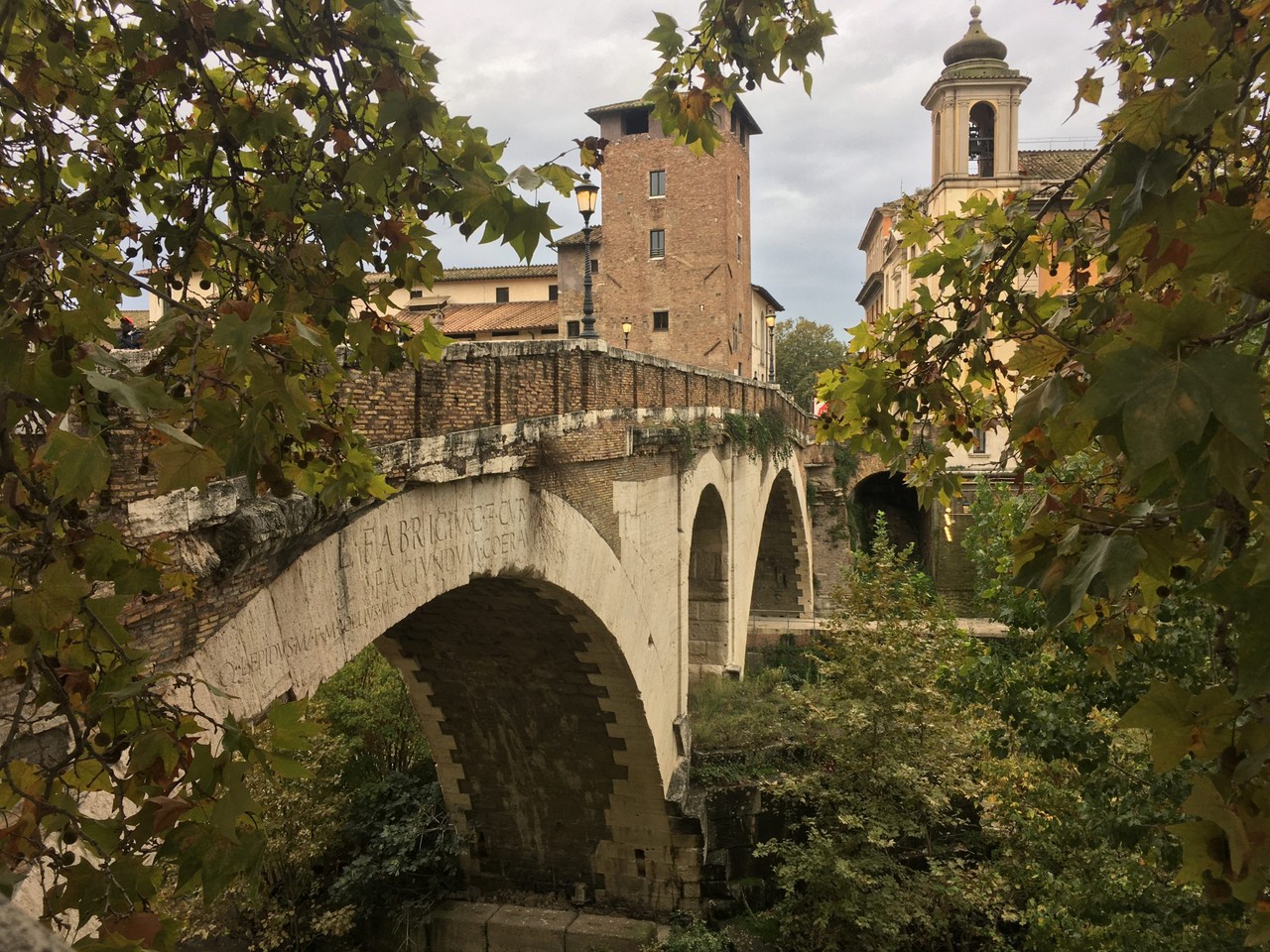In front of the Synagogue of Rome is the oldest bridge on the river Tiber, the Fabricio Bridge. Built in 62 b.C., it is almost intact, apart from the first arch, renovated in the 20th century. The Tiber Island has always been used as a place for cures, with two hospitals, the Fatebenefratelli and the Israelitic hospital. During the Roman Ghetto round up, the Fatebenefratelli hid a number of Jews to prevent them from being be loaded on trucks, forcing them into hospital with so-called “K syndrome”.
The disease, made up by a young antifascist doctor and by the head physician of the hospital, was named after the first letter of the family names of Albert Kesselring, the commander in chief in the Mediterranean, and Herbert Kappler, the commander of the German police and security services in Rome. The two doctors signed fake documents with the name of the “K syndrome”, defined as very contagious, to make the Nazis refrain from checking the names of the patients.
Indeed, when on the evening of 16 October 1943, the Nazis came to the hospital, the doctors welcomed them with masks, explaining that a terrible epidemic of “K disease” had broken out in the hospital. The SS, fearing the contagion, retreated. This way, the brave doctors of Fatebenefratelli hospital were successful in saving dozens of Jews and antifascists from death and deportation.
